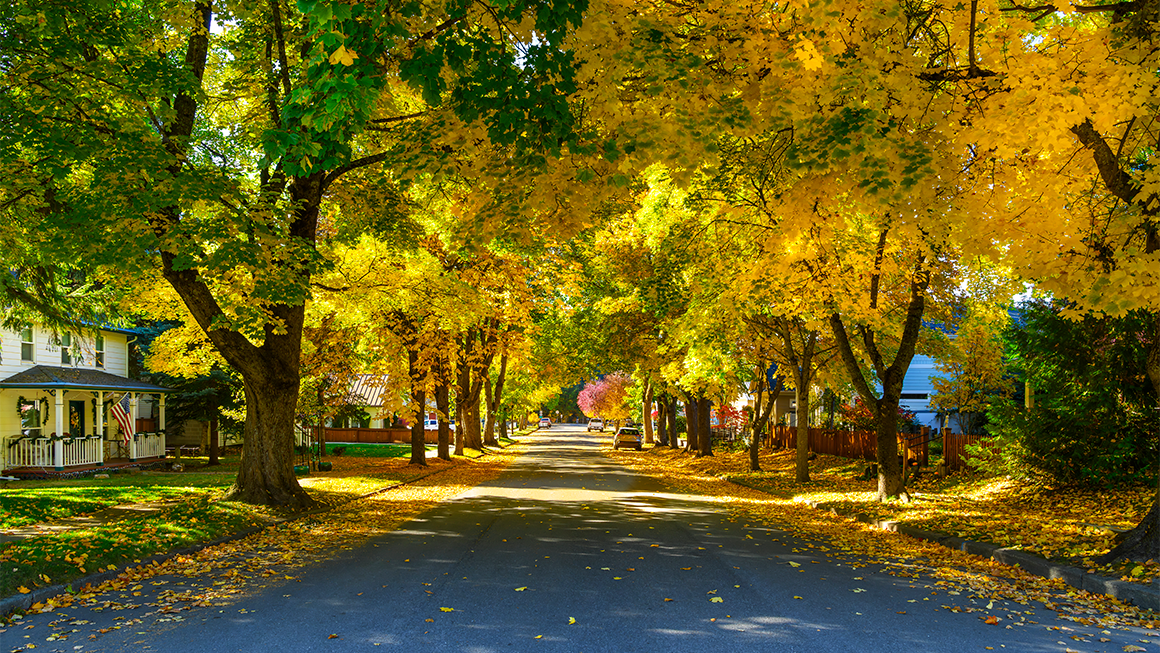
Cities across the country endured record-breaking heat this summer. In June, the Northeast saw temperatures upward of 100 degrees Fahrenheit, which may be the coolest temperatures we experience for summers to come.
Trees can cool the air by up to 45 degrees Fahrenheit, making the difference between a livable summer and a dangerously hot one. Urban Institute research shows that in addition to increased heat, neighborhoods with fewer trees face worse air quality, greater flood risk, and increased rates of asthma and mental stress.
Though temperatures rose across the nation, not all communities felt the heat equally. Urban communities face significantly higher temperatures than surrounding suburban and rural areas because they have a greater concentration of impervious, heat-absorbing surfaces such as roads, pavement, and buildings. They also have more vehicular activity, and traffic emits more heat, which causes a heat island effect. And evidence shows sustained tree cover mostly exists in higher-income, predominantly white neighborhoods, while lower-income communities and communities of color often have fewer trees and smaller, lower-quality green spaces.
Despite their cooling benefits, the US Department of Agriculture estimates that cities are losing 36 million trees annually. This year, there has been a significant federal rollback of $75 million in urban forestry investments, leaving states and cities to carve funding out of local budgets to support tree planting and preservation.
The equitable distribution of tree canopies improves residents’ health and strengthens communities. These disparities are rooted in decades of discriminatory planning and disinvestment in low-income neighborhoods and communities of color.
Improving tree canopies across cities requires a balanced approach—one that couples greening efforts with robust antidisplacement strategies to ensure all residents can enjoy the benefits without being pushed out. Here are three strategies city leaders and environmental nonprofits can collaborate on to ensure there are more equitably distributed trees in communities.
- Plant more trees and increase the overall vegetation while preventing displacement. Adding plants to underserved areas is an important first step toward improving the distribution of trees across an urban landscape. However, a surge in green investments, like trees and parks, can drive up property values, resulting in pricing out residents with low incomes. To mitigate this, some advocate for “just green enough” strategies, which intentionally limit the scale of greening to avoid displacement. While these approaches help protect existing communities, they can also constrain the broader environmental and health benefits that come with more expansive green investments.
- Engage and incentivize residents to participate in collective action. By encouraging residents to participate, cities can significantly reduce the costs associated with increasing the tree canopy while fostering a sense of ownership and sustained stewardship. Casey Trees has a multipronged approach to increasing access to trees in Washington, DC, that empowers individual residents and provides citywide benefits. They offer free trees to residents who agree to plant and care for them on their own property, and they host community tree plantings to grow and maintain the tree canopy. Additionally, as a land trust, Casey Trees permanently protects green spaces across the city through conservation easements—legal agreements that protect from future development. This strategy ensures the preservation of existing trees, which is critical for providing a widespread and enduring tree canopy.
- Establish a citywide canopy goal to help sustain action. Improving the distribution of trees can take several years, even decades. Vancouver, Washington, set a goal of increasing their canopy by 28 percent by 2047, planting approximately 2,000 trees per year. The program aims to educate residents about the benefits of trees and use software to identify places with fewer trees where they can prioritize efforts. The city’s comprehensive approach includes resident outreach and stewardship; collaboration with city agencies, such as community and economic development, public works, and planning; and partnerships with neighborhood associations. The Urban Forestry Work Plan ensures tree planting is a central city goal with clear outcomes for residents.
Addressing the disparities in access to urban trees requires more than planting more saplings. It requires an intentional understanding of community needs and aligned local government funding to support widespread tree cover expansion. With empowered local stewards, and dedicated local programs committed to preservation, ensuring everyone has access to green, healthy communities is possible.
Let’s build a future where everyone, everywhere has the opportunity and power to thrive
Urban is more determined than ever to partner with changemakers to unlock opportunities that give people across the country a fair shot at reaching their fullest potential. Invest in Urban to power this type of work.